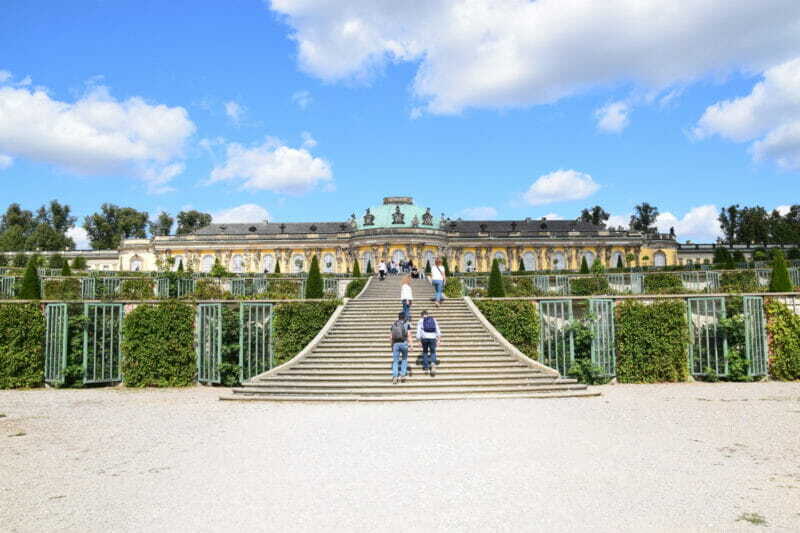Sanssouci Palace | Vineyard terraces

The famous garden view of Sanssouci was created after Frederick the Great’s decision to plant a terraced vineyard on the southern slope of the Bornstedter ridge. Oaks used to stand on the hill.
Table of contents
Vineyard terraces at Sanssouci Palace
In the times of the soldier king Friedrich Wilhelm I oak trees stood on the hill. This made the oaks fell for the expansion of the city of Potsdam and for the fortification of the swampy ground. What remained was a “desert mountain”, as Friedrich II called it.
On August 10, 1744, Frederick II gave an order to plant this desert mountain on the southern slope of the Bornstedter ridge, a terraced vineyard. Friedrich already knew wine plantations from the time of his crown prince, because after he had the pleasure garden at the Potsdam City Palace converted into a parade ground in 1714, Friedrich Wilhelm I created the Marlygarten as a pleasure and kitchen garden northwest of the Brandenburg Gate. Until now, these areas had been used by Potsdam citizens as garden areas. In this context, the first wine plantings were also made on the Bornstedter Mühlenbergs.
This gave rise to the famous garden view of Sanssouci.
Construction of the vineyard terraces
The vineyard terraces were largely completed by 1746. The project was headed by the architect Friedrich Wilhelm Diterichs. The gardening work was carried out by Philipp Friedrich Krutisch.
Friedrich Wilhelm Diterichs divided the southern slope into six broad terraces with walls that swing inwards towards the center. This was to maximize the use of solar radiation.
Different domestic fruit and wine varieties as well as foreign varieties were grown on the vineyard terrace. The foreign varieties were housed in glazed niches. There were also 84 orange trees in tubs between the taxus pyramids in the summer.
Vineyard terraces with 132 steps
Originally, 120 steps led up the slope in the central axis. Today there are even 132. The terraces are divided six times and have an access ramp on both sides of the slope.
From 1745, an ornamental garden in the baroque style with lawns was created below the terraces. In the middle, the “Great Fountain” was created in 1748, a four-pass fountain.
Crypt
Frederick II was so strongly connected to his Sanssouci Palace that the king wanted to be buried in a crypt on the top vineyard terrace. He also wanted to be close to his Sanssouci in death. This wish was only fulfilled in 1991. Frederick the Great’s grave is on the upper terrace.
